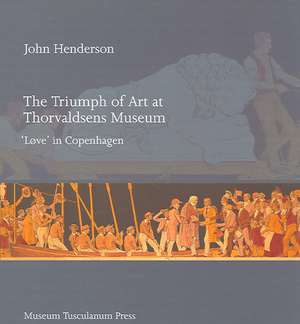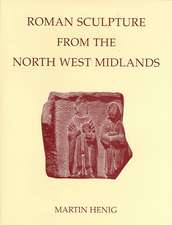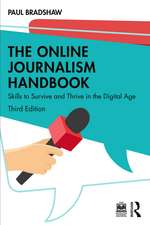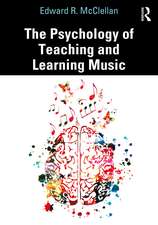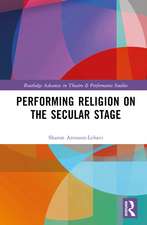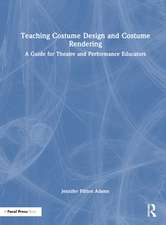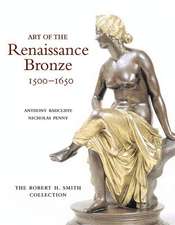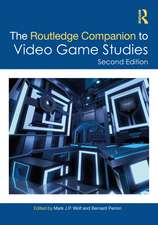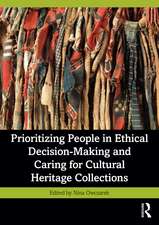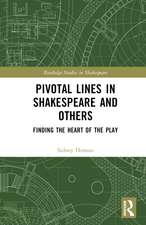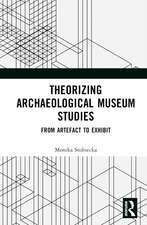Triumph of Art at Thorvaldsens Museum
Autor John G. W. Hendersonen Limba Engleză Hardback – 14 iun 2005
Preț: 247.99 lei
Preț vechi: 283.05 lei
-12% Nou
Puncte Express: 372
Preț estimativ în valută:
47.46€ • 49.37$ • 39.78£
47.46€ • 49.37$ • 39.78£
Carte disponibilă
Livrare economică 20 februarie-06 martie
Preluare comenzi: 021 569.72.76
Specificații
ISBN-13: 9788763501323
ISBN-10: 8763501325
Pagini: 170
Ilustrații: illus
Dimensiuni: 222 x 235 x 15 mm
Greutate: 0.54 kg
Editura: Museum Tusculanum Press
ISBN-10: 8763501325
Pagini: 170
Ilustrații: illus
Dimensiuni: 222 x 235 x 15 mm
Greutate: 0.54 kg
Editura: Museum Tusculanum Press
Recenzii
"In fact, the book, at just 120 pages. would make an excellent introductory text for undergraduate students of either ancient or modern sculpture; the accounts of Thorvaldsen's sculptures in the course of their appearence in the frieze, in Chapter Two, make a good introduction to the sculptor's work, and Chapters One and Three include useful accounts of a number of important ancient sculptures that relate in some way to the imagery of the frieze. More importantly, the book presents a rich and nuanced example of reception study, a critical method that has gained ground rapidly in Classics in recent years ... Henderson's study of the Copenhagen frieze thus takes its place as one of the most thoughtful and detailed reception studies yet to appear in art history ..." - Elizabeth Prettejohn, Art History Vol. 29, Nov 2006
"H.'s [John Henderson's] approach is, as ever, a playful one. ... Essentially this book allows us to visit the museum and walk around the frieze with H. as a companion, constantly pointing things out, sharing juicy titbits and making bad jokes. This proves to be enormous fun. More importantly, what we learn goes beyond this one artwork and we take away new insights into museums, triumphal parades and the way the modern world has used antiquity in the construction of national identity." - Katharine Edgar, Journal of Hellenic Studies 128, 2008
"In fact, the book, at just 120 pages. would make an excellent introductory text for undergraduate students of either ancient or modern sculpture; the accounts of Thorvaldsen's sculptures in the course of their appearence in the frieze, in Chapter Two, make a good introduction to the sculptor's work, and Chapters One and Three include useful accounts of a number of important ancient sculptures that relate in some way to the imagery of the frieze. More importantly, the book presents a rich and nuanced example of reception study, a critical method that has gained ground rapidly in Classics in recent years ... Henderson's study of the Copenhagen frieze thus takes its place as one of the most thoughtful and detailed reception studies yet to appear in art history ..." - Elizabeth Prettejohn, Art History Vol. 29, Nov 2006 "H.'s [John Henderson's] approach is, as ever, a playful one. ... Essentially this book allows us to visit the museum and walk around the frieze with H. as a companion, constantly pointing things out, sharing juicy titbits and making bad jokes. This proves to be enormous fun. More importantly, what we learn goes beyond this one artwork and we take away new insights into museums, triumphal parades and the way the modern world has used antiquity in the construction of national identity." - Katharine Edgar, Journal of Hellenic Studies 128, 2008
"H.'s [John Henderson's] approach is, as ever, a playful one. ... Essentially this book allows us to visit the museum and walk around the frieze with H. as a companion, constantly pointing things out, sharing juicy titbits and making bad jokes. This proves to be enormous fun. More importantly, what we learn goes beyond this one artwork and we take away new insights into museums, triumphal parades and the way the modern world has used antiquity in the construction of national identity." - Katharine Edgar, Journal of Hellenic Studies 128, 2008
"In fact, the book, at just 120 pages. would make an excellent introductory text for undergraduate students of either ancient or modern sculpture; the accounts of Thorvaldsen's sculptures in the course of their appearence in the frieze, in Chapter Two, make a good introduction to the sculptor's work, and Chapters One and Three include useful accounts of a number of important ancient sculptures that relate in some way to the imagery of the frieze. More importantly, the book presents a rich and nuanced example of reception study, a critical method that has gained ground rapidly in Classics in recent years ... Henderson's study of the Copenhagen frieze thus takes its place as one of the most thoughtful and detailed reception studies yet to appear in art history ..." - Elizabeth Prettejohn, Art History Vol. 29, Nov 2006 "H.'s [John Henderson's] approach is, as ever, a playful one. ... Essentially this book allows us to visit the museum and walk around the frieze with H. as a companion, constantly pointing things out, sharing juicy titbits and making bad jokes. This proves to be enormous fun. More importantly, what we learn goes beyond this one artwork and we take away new insights into museums, triumphal parades and the way the modern world has used antiquity in the construction of national identity." - Katharine Edgar, Journal of Hellenic Studies 128, 2008
Cuprins
Introduction; Survey of Literature; History and Characteristics of the Jesus Army; History and Characteristics of the FWBO; Social Composition of the Jesus Army and the FWBO; Attitudes and Values of Members; Altruism in the Jesus Army and the FWBO; Motivation for Altruism; Development of Altruism; Conclusions.
